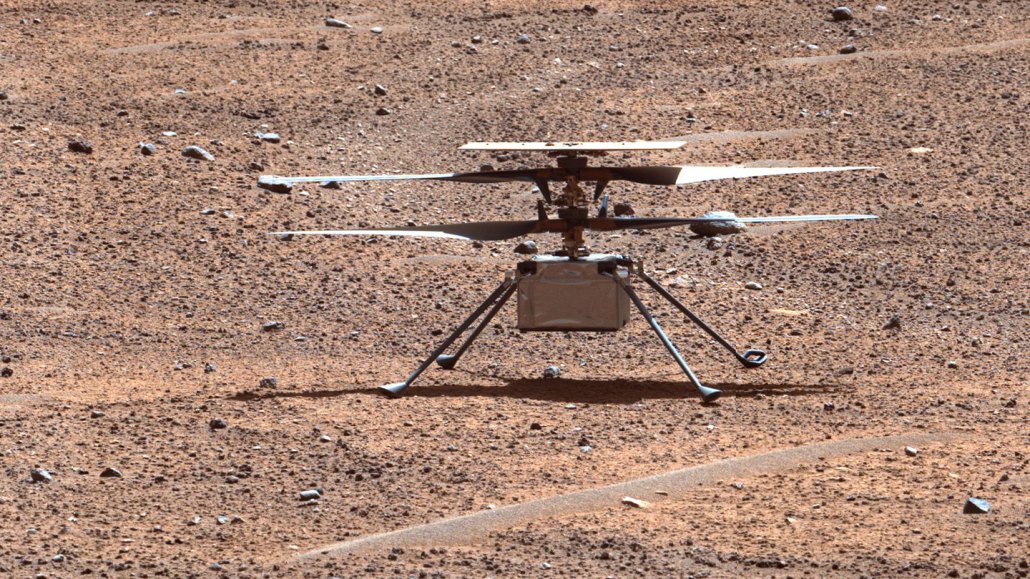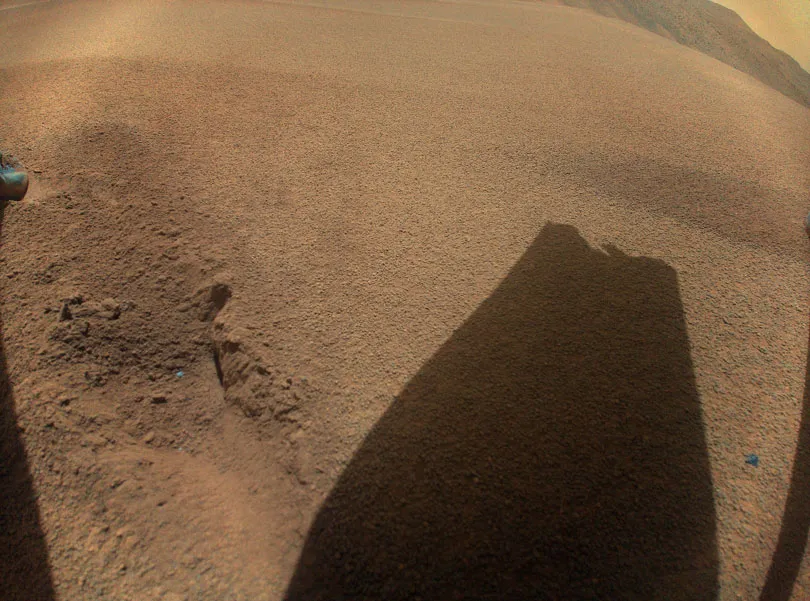NASA’s Ingenuity helicopter officially ends its mission on Mars
A damaged rotor blade has permanently grounded the history-making robot

The Mars rover Perseverance shot this image of Ingenuity on August 2, 2023, just before the little helicopter took off for its 54th flight.
NASA
After nearly three years, NASA’s Ingenuity helicopter, the first spacecraft to undertake a powered flight on another world, has ended its mission. Officials at the agency confirmed on January 25 that the history-making quad-copter has sustained damage to one of its rotor blades and is no longer capable of flying.
“While we knew this day was inevitable, it doesn’t make it any easier,” said Lori Glaze, NASA’s planetary science division director, during a news conference on the status of the quad-copter.
Many on the Ingenuity team are already thinking back fondly on the mission’s many accomplishments. “[For] a helicopter that’s overperformed the way that this has, I don’t think you can really mourn it and be sad,” says Håvard Fjær Grip, the mission’s chief pilot and an engineer at NASA’s Jet Propulsion Laboratory in Pasadena, Calif.
Ingenuity — Ginny to its friends — hitched along with NASA’s car-sized rover Perseverance as the rover landed on Mars in February 2021 (SN: 2/17/21). A few months later, the small helicopter spun its rotor blades, climbed into the thin Martian atmosphere, rose to a height of three meters, and took a picture of Perseverance during its first test flight (SN: 4/19/21).
The aerial robot vastly outperformed its initial expectations, which was to fly a handful of times over 30 days. The idea was to demonstrate flight was possible on Mars, and then ground itself. Ingenuity instead undertook a total of 72 flights, traveling 14 times farther than planned and logging more than two hours of total flight time. During its travels, the helicopter did far more than fly: It became part of the science mission (SN: 4/30/21). Ingenuity made 3-D elevation maps of its surroundings, went places that Perseverance couldn’t get to, and scouted potential sites for the rover’s scientific observations.

Ingenuity helped scientists discover that, unlike on Earth, the speed of sound in Mars’ atmosphere depends on pitch, likely due to its carbon-dioxide rich nature (SN: 4/11/22). It also demonstrated the ability to autonomously choose landing sites, clean itself after dust storms, and snap tons of amazing photos of the Martian landscape, often including its own shadow (SN: 4/19/22).
During the helicopter’s 70th flight in December near the rim of Jezero crater, the robot reached an area with sandy, mostly featureless terrain, posing a challenge for its autonomous navigation system, which uses features such as rocks to know where it is and how to get around. On its next journey, the helicopter ran out out of features to track and executed an emergency landing. “That’s when we realized that this is more challenging to navigate than we thought,” says Grip. The intent for its subsequent flight was to rise a bit in the air, hover over the terrain, and get a fix on its location. Unfortunately, things didn’t go as planned.
On January 19, NASA reported that Ingenuity briefly lost communications with the Perseverance rover as it was descending during its 72nd flight. While contact was soon restored, the small helicopter suffered damage from the fall that has permanently grounded it.
There was a moment of sadness when the team first received images that confirmed damage to the helicopter, Teddy Tzanetos, Ingenuity’s project manager, said in the news briefing. “But that was very quickly replaced with happiness and pride and a feeling of celebration for what we’ve pulled off.”







